Chemical Hazard Communication Plan
Montana State University – Bozeman
Contents:
Purpose
Scope
Responsibilities:
- Deans, Directors, and Department Heads
- MSU Leadership, Managers, Supervisors, Faculty and Principal Investigators (PI)
- Employees
- Safety Coordinators (SC)
- Safety & Risk Management
- Environment, Safety & Health Committee
Identification of Hazardous Chemicals
Chemical Inventory
Labels & Other Forms of Warning:
- Labels on Containers from Manufacturers (Primary Containers)
- Labels on Non-Manufacturer Containers (Secondary Containers)
- Label Maintenance
- Special Container Labeling
- Door Signage
Safety Data Sheets
Employee Information and Training:
- Training Content
- Who Must Be Trained
- Training Delivery
- Training Documentation
Occupational Medical Surveillance
Non-Routine Tasks
Unlabeled Piping
Contractors and Vendors
Appendix A: Exclusions
Appendix B: Information on Chemical Identification
Version History
|
|
Date | Comments |
| 1 | 12/1/15 | Consolidated program elements into one document. |
| 2 | 3/30/20 | Updated Chemical Inventory process with BioRaft implementation. |
| 3 | 3/1/22 | Updated Chemical Hygiene Plan |
| 4 | 6/13/22 | Reviewed regulations for changes. No changes needed. |
| 5 | 11/21/23 | Update Name Change - BioRAFT to SciShield |
| 6 | 6/16/25 | Update Name Change - SciShield to MSU's Chemical Inventory Database (SciSure) |
Purpose
The purpose of this Hazard Communication plan to protect faculty, staff, students and visitors who may be working with or around hazardous chemicals. The program is designed to ensure that the hazards of chemicals used on campus are communicated to affected employees, along with safe handling and protective measures. Implementing these measures reduces the likelihood of a chemical incident that may affect faculty, staff, students or visitors to campus.
The program fulfills Occupational Safety and Health Administration (OSHA) regulatory requirements in 29 Code of Federal Regulations (CFR) 1910.1200, Hazard Communication, along with responsibilities in the Montana State University (MSU) Environment, Safety & Health Policy.
Teaching, research and analytical laboratories must also comply with the requirements of 29 CFR 1910.1450, Occupational Exposure to Hazardous Chemicals in Laboratories, by completing a Chemical Hygiene Plan (template available at montana.edu/srm), in addition to implementing all requirements associated with this standard.
Scope
This program covers all hazardous chemical operations within the MSU Bozeman campus as well as locally leased work spaces used by MSU faculty and staff.
Hazardous chemicals are defined as those which present a physical hazard, health hazard, simple asphyxiant, combustible dust, pyrophoric gas, or other hazard not otherwise classified.
The primary components of the program are:
- Chemical labeling and other forms of warning, such as door signs;
- Chemical inventory;
- Availability of Safety Data Sheets, or SDSs (formally known as Material Safety Data Sheets); and
- Provision of employee information and training.
This program does not cover tobacco, food, drugs, cosmetics or consumer products used in the same duration and frequency that could reasonably be experienced by consumers when used for the purpose intended. See Appendix A for more detail on exclusions.
Responsibilities:
Deans, Directors, and Department Heads
Responsible for:
- Ensuring compliance with this program in their respective areas of responsibility;
- Ensuring corrective actions are taken to remedy deficiencies identified in their respective areas of responsibility; and
- Stopping and/or complying with SRM requests to cease any activity which presents an unreasonable health or safety risk to employees, students or visitors.
MSU Leadership, Managers, Supervisors, Faculty and Principal Investigators (PI)
Responsible for:
- Ensuring implementation of this program in their area; and
- Ensuring their employees and students are trained.
Employees
Responsible for:
- Complying with this program;
- Not removing or defacing labels;
- Reviewing the SDS prior to working with new chemicals;
- Attending hazard communication (on-line or classroom) and site- and chemical-specific training as required.
Safety Coordinators (SC)
Responsible for:
- Coordinating with Deans, Directors, Department Heads, Building Supervisors, and SRM to assist in program implementation; and
- Using chemical safety as a topic in periodic safety meetings.
Safety & Risk Management
Responsible for:
- Developing and updating this program;
- Maintaining exposure records associated with chemical monitoring;
- Providing general chemical hazard communication training;
- Providing support in program implementation; and
- Performing periodic inspections to assist in deficiency identification and correction (including stopping activities which present unreasonable health or safety risk to employees students or visitors).
Environment, Safety & Health Committee
Responsible for:
- Reviewing and recommending adoption of this program.
Identification of Hazardous Chemicals
Identification of hazardous chemicals is the chemical manufacturer and importer’s responsibility, per OSHA 1910.1200. As end users, we rely on labels, safety data sheets (SDSs) and Globally Harmonized System (GHS) symbols to recognize hazardous chemicals, along with their specific hazards and controls.
This topic is covered in required Hazard Communication training (either on-line or classroom). Additionally, Appendix B, Information on Chemical Identification, provides resources for recognizing hazardous chemicals.
Researchers creating or synthesizing new chemical compounds or mixtures must identify the hazards and communicate them to affected staff. If the compound or mixture will be used/marketed to others, or shipped, the researcher must create a Safety Data Sheet and appropriately label containers using the format described in the Hazard Communication standard, 29 CRF 1910.1200.
Chemical Inventory
MSU departments, units, areas and/or laboratories are required to create and maintain an inventory of hazardous chemicals for their respective locations to comply with local, state and federal regulations. The inventory must be entered into MSU's Chemical Inventory Database (SciSure) (see SRM web site for information) .
- MSU leadership must ensure that a chemical inventory is completed for each individual hazardous chemical area to accurately reflect the chemicals contained in that room/area. MSU's Chemical Inventory Database (SciSure) must be used.
- MSU leadership or their designees are responsible for ensuring that the chemical inventory is updated as chemicals are acquired or removed from the work area that they control.
- MSU leadership must ensure lab owners are updating whenever a new chemical hazard is introduced into the work area, or if the chemicals in the work area change.
- The chemical identity listed on the inventory must be the same as the chemical identity on the corresponding Safety Data Sheet.
* The quantity entered should be the highest stock levels likely to be maintained – each day’s level does not need to be tracked.
*Bulk quantities of hazardous chemicals stored in tanks or process equipment, such as in research equipment reservoirs, need to be included in the inventory.
Labels & Other Forms of Warning:
Labels on Containers from Manufacturers (Primary Containers)
Primary containers – those received from manufacturers – must come labeled with the following information:
- Product identifier (name);
- Signal word;
- Hazard statement;
- Pictograms;
- Precautionary statement(s); and,
- Name, address and telephone number of the chemical manufacturer, importer, or other responsible party.
Labels on Non-Manufacturer Containers (Secondary Containers)
Chemicals transferred from their primary (manufacturer) containers to secondary containers must be labeled unless intended for immediate use by one individual. The secondary containers must be labeled with:
- The information above; or
- Product identifier (name), words, pictures, symbols, or combination thereof, which provides information regarding chemical hazards.
Label Maintenance
Labels must not be removed or defaced. If a label becomes illegible, or if the manufacturer updates the labeling information, the container must be re-labeled immediately.
Special Container Labeling
Some chemicals, or classes of chemicals have specific labeling requirements:
- Peroxide-forming chemicals must be labeled with the date received, and date opened;
- Chemicals of Interest per the US Department of Homeland Security should be labeled as such and kept locked when not in use. The full list is in 6 CFR Part 27, Appendix to Chemical Anti-Terrorism Standards, Final Rule.
Door Signage
Rooms containing hazardous chemicals, especially laboratory areas, must have standardized door signage to communicate entry requirements, chemical hazards, and contact information. To receive a sign for your work area (if one does not exist), send the area chemical inventory, along with a Hazard Warning Sign request to srmtraining@montana.edu.
Safety Data Sheets
Safety Data Sheets (SDSs) are the cornerstone of the MSU Hazard Communication Program. SDS receipt, use, and organization are critical to the success of staff in gaining knowledge of chemical hazards, proper precautions, and good chemical hygiene practices.
MSU departments, units, areas and/or laboratories are required to maintain SDSs for each hazardous chemical used or stored in their areas.
- SDSs must be readily accessible during each workshift to employees when they are in their work area(s);
- SDSs may be stored in paper form, or may be stored electronically, as long as no barriers to immediate employee access are created by either option.
- If employees use multiple work locations, the SDSs may be kept in the primary location, so long as employees have access to information, especially in an emergency.
MSU is investigating the purchase of software to automatically link SDSs with chemical inventories, to make this process more efficient.
Employee Information and Training
Hazard Communication training is required at time of initial assignment, and whenever a new chemical hazard is introduced into the work area. Documentation of training must be maintained by the lab space manager, PI, or both.
Training Content
- The requirements of 29 CRF 1910.1200, Hazard Communication;
- The location of the written Hazard Communication Plan (montana.edu/srm) and contents therein;
- An explanation of labels;
- An explanation of Safety Data Sheets and how to find them;
- Methods and observations used to detect the presence or release of hazardous chemicals;
- Physical and health hazards of chemicals;
- Protective measures such as work practices, emergency procedures and Personal Protective Equipment;
- Site-specific training regarding chemical operations in their work areas and location of SDSs for chemicals in their work areas; and
- What to do in an emergency.
Who Must Be Trained
All employees, staff, faculty, and principal investigators, and affected individuals who work with or around chemicals must receive training. “Affected individuals” are considered to be those persons whom are using, exposed, or possibly exposed to hazardous chemicals during the course and scope of their job duties.
* Students are not considered employees (unless they’re paid or otherwise qualify for workers’ compensation insurance coverage), but protective measures and communication must be equivalent. For example, class assignments should include information on chemical hazards and SDS use and location, Personal Protective Equipment, as well as what to do in emergencies.
Training Delivery
Training is delivered in three ways:
- Broad awareness training is given in New Employee Orientation and is intended for those not working with or around chemicals – this provides awareness that there are chemicals on campus, that they are labeled, that warning signs are on various campus doors, and that additional training is required for those working with chemicals;
- Hazard Communication for those working with or around chemicals is delivered electronically (montana.edu/srm) or via scheduled classroom presentations advertised via MSU Today; and
- Site-specific training for those working with or around chemicals is delivered by work area/lab space owners (SRM will assist upon request).
BOTH Hazard Communication and site-specific training are required for people working with or around chemicals.
Training Documentation
Documentation of awareness training is done by Human Resources, Hazard Communication training (on-line and classroom) is maintained by SRM, and site-specific training must be maintained by each work area.
Occupational Medical Surveillance
Some high-hazard chemicals, carcinogens or suspect human carcinogens require occupational medical surveillance. If you are using a chemical on the list below, you must contact Safety and Risk Management to discuss how the chemical is used, and receive information on what medical surveillance may be involved. Please view the Medical Screening and Surveillance Requirements in OSHA Standards.
|
· Acrylonitrile |
|
· Arsenic (Inorganic) |
|
· Benzene |
|
· 1,3 Butadiene |
|
· Cadmium |
|
· Chromium (VI), Hexavalent Chromium |
|
· 1,2-dibromo-3-choropropane |
|
· Ethylene oxide |
|
· Formaldehyde |
|
· Lead |
|
· Methylene chloride |
|
· Methylenedianiline |
|
· Vinyl chloride |
Non-Routine Tasks
MSU staff may be required to perform hazardous new or non-routine tasks. Prior to starting work on such tasks, individual departments, organizational unit supervisors, faculty or PIs must:
- Specify and define the unusual task(s) and the steps inherent in the work to be done;
- Identify all potential chemical, physical, radiological, and biological hazards that may be involved;
- Assess whether the hazards may result in exceptional risks and devise methods to minimize the risks to an acceptable level. As part of this assessment, assess whether a less hazardous chemical can be used or if a lesser amount of the chemical can be used to accomplish the task;
- Identify safe work practices, engineering controls (such as fume hoods), and personal protective equipment;
- Document the hazards and planned procedures; and
- Train affected workers prior to performing the work tasks.
Unlabeled Piping
All pipes containing chemicals must be labeled as to contents. If unlabeled process piping is discovered in a work area, report it to the area/lab owner. Lab owners are responsible for labeling experimental process piping (such as hard-plumbed laboratory gas lines).
If the unlabeled process piping is building-related, contact Facilities Services Work Control to request labeling (extension 2107).
Contractors and Vendors
MSU leadership are responsible for communicating hazards to contractors working within their areas. The contractor is responsible for appropriately training their employees on Hazard Communication. Communicating the hazards means alerting them to the types and hazards of chemicals in the work area, to the location of SDSs, and to emergency procedures.
Similarly, contractors that bring hazardous chemicals into a work area to perform work must notify area staff.
Appendix A: Exclusions
The following are excluded from requirements in this program:
1910.1200(b)(6)(i) Any hazardous waste as such term is defined by the Solid Waste Disposal Act, as amended by the Resource Conservation and Recovery Act of 1976, as amended (42 U.S.C. 6901 et seq.), when subject to regulations issued under that Act by the Environmental Protection Agency;
1910.1200(b)(6)(ii) Any hazardous substance as such term is defined by the Comprehensive Environmental Response, Compensation and Liability Act (CERCLA) (42 U.S.C. 9601 et seq.) when the hazardous substance is the focus of remedial or removal action being conducted under CERCLA in accordance with Environmental Protection Agency regulations.
1910.1200(b)(6)(iii) Tobacco or tobacco products;
1910.1200(b)(6)(iv) Wood or wood products, including lumber which will not be processed, where the chemical manufacturer or importer can establish that the only hazard they pose to employees is the potential for flammability or combustibility (wood or wood products which have been treated with a hazardous chemical covered by this standard, and wood which may be subsequently sawed or cut, generating dust, are not exempted);
1910.1200(b)(6)(v) Articles (as that term is defined in paragraph (c) of this section);
1910.1200(b)(6)(vi) Food or alcoholic beverages which are sold, used, or prepared in a retail establishment (such as a grocery store, restaurant, or drinking place), and foods intended for personal consumption by employees while in the workplace;
1910.1200(b)(6)(vii) Any drug, as that term is defined in the Federal Food, Drug, and Cosmetic Act (21 U.S.C. 301 et seq.), when it is in solid, final form for direct administration to the patient (e.g., tablets or pills); drugs which are packaged by the chemical manufacturer for sale to consumers in a retail establishment (e.g., over-the-counter drugs); and drugs intended for personal consumption by employees while in the workplace (e.g., first aid supplies);
1910.1200(b)(6)(viii) Cosmetics which are packaged for sale to consumers in a retail establishment, and cosmetics intended for personal consumption by employees while in the workplace;
1910.1200(b)(6)(ix) Any consumer product or hazardous substance, as those terms are defined in the Consumer Product Safety Act (15 U.S.C. 2051 et seq.) and Federal Hazardous Substances Act (15 U.S.C. 1261 et seq.) respectively, where the employer can show that it is used in the workplace for the purpose intended by the chemical manufacturer or importer of the product, and the use results in a duration and frequency of exposure which is not greater than the range of exposures that could reasonably be experienced by consumers when used for the purpose intended;
1910.1200(b)(6)(x) Nuisance particulates where the chemical manufacturer or importer can establish that they do not pose any physical or health hazard covered under this section;
1910.1200(b)(6)(xi) Ionizing and nonionizing radiation; and,
1910.1200(b)(6)(xii) Biological hazards.
Appendix B: Information on Chemical Identification
The first step in managing chemicals is to be able to identify the item and associated hazard. After identification, information on hazards and protective measures can be shared by impacted employees. Helpful information on the following topics is below:
- Chemical container and Safety Data Sheet information;
- Globally Harmonized System (GHS) symbols and definitions;
- Chemical Mixtures;
- Chemical Byproducts;
- Consumer Product exemptions and descriptions; and
- A table showing examples of identification and resulting actions.
Chemical Container Evaluation:
To identify whether a container holds hazardous chemicals:
- Look on the label and Safety Data Sheet (SDS) for words such as “Danger,” “Caution,” “Warning,” or containing warnings such as “irritant,” “flammable,” “sensitizer,” “corrosive,” “carcinogenic,” , or that indicate that personal protective equipment such as chemical-protective gloves or a respirator may be needed if the chemical is used or spilled.
- A chemical should be identified as hazardous if there is a hazard coding with words, numbers, or colors such as from the NFPA (National Fire Protection Agency) or HMIS (Hazardous Materials Information System) of “1” or greater or it is noted as having a “chronic” hazard.

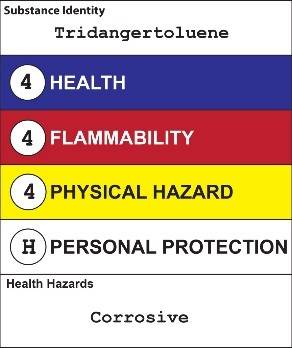
3. A chemical must be identified as hazardous if there is any known, documented evidence that the chemical or its chemical byproducts formed from normal use may cause a known health effect, or if evidence shows there is a physical hazard due to the chemical’s properties of being flammable, or a combustible liquid, a compressed gas, an explosive, an organic peroxide, an oxidizer, or is pyrophoric, unstable (reactive), or water-reactive.
Globally Harmonized System (GHS) Symbols.
The Globally Harmonized System (GHS) pictograms also provide hazard information and are shown below. (Other pictograms showing environmental pollution and transportation concerns have also been standardized but are not shown below.)
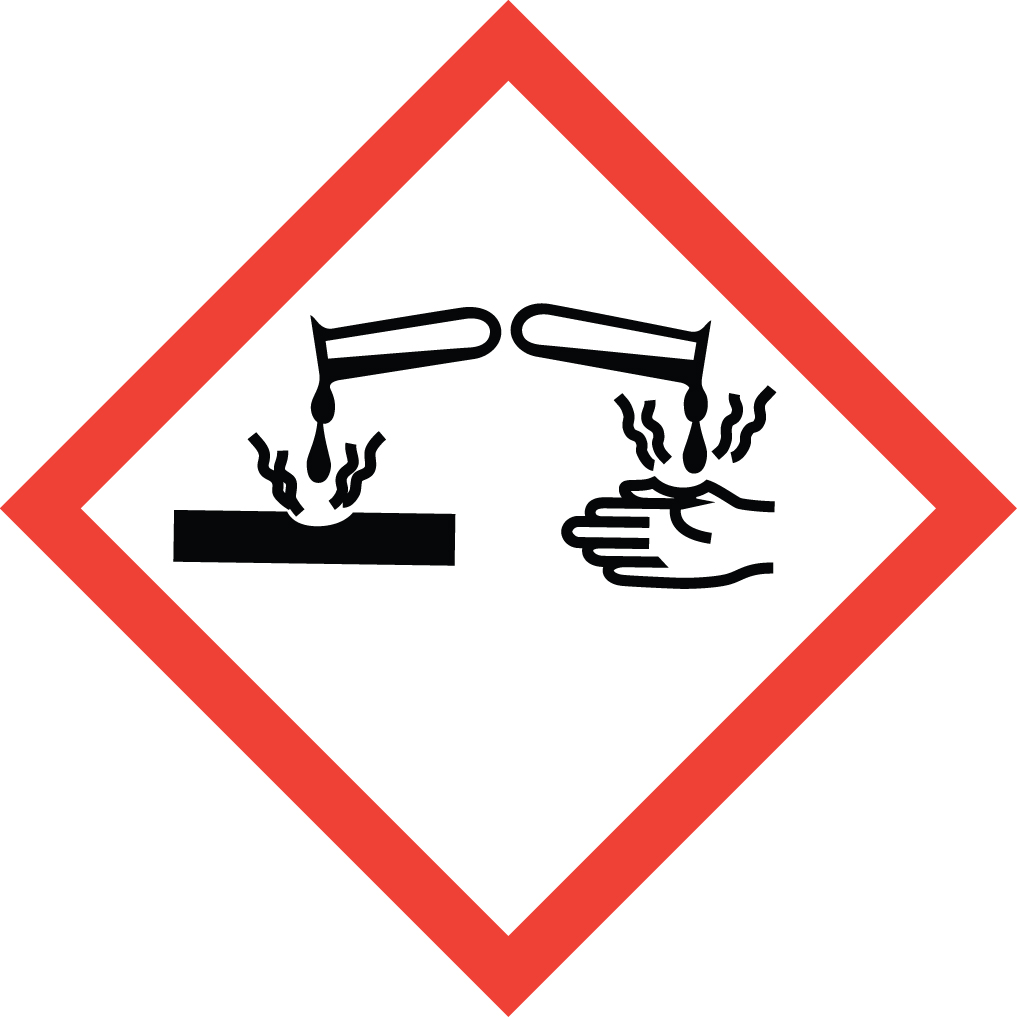
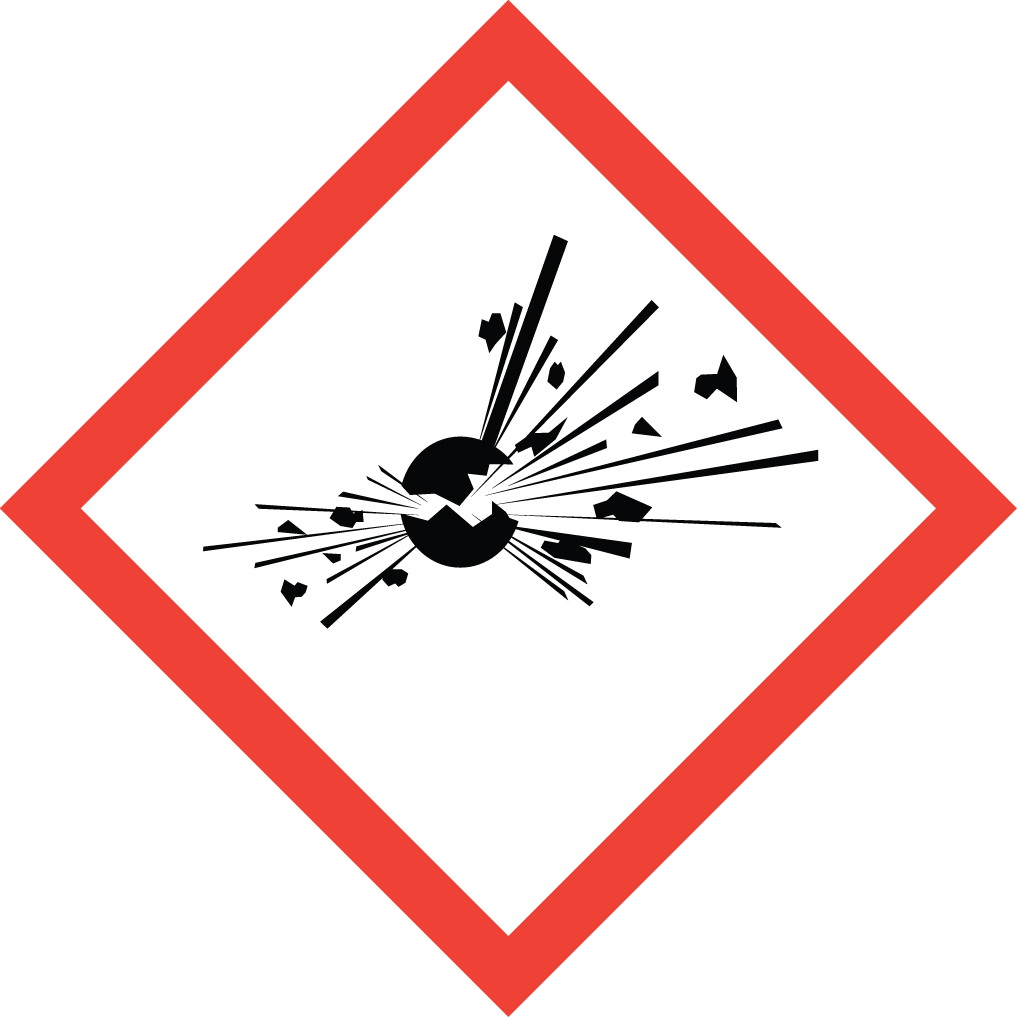
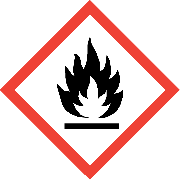
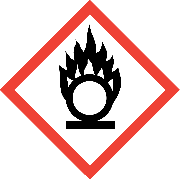
Corrosive Explosives Flammable Oxidizer
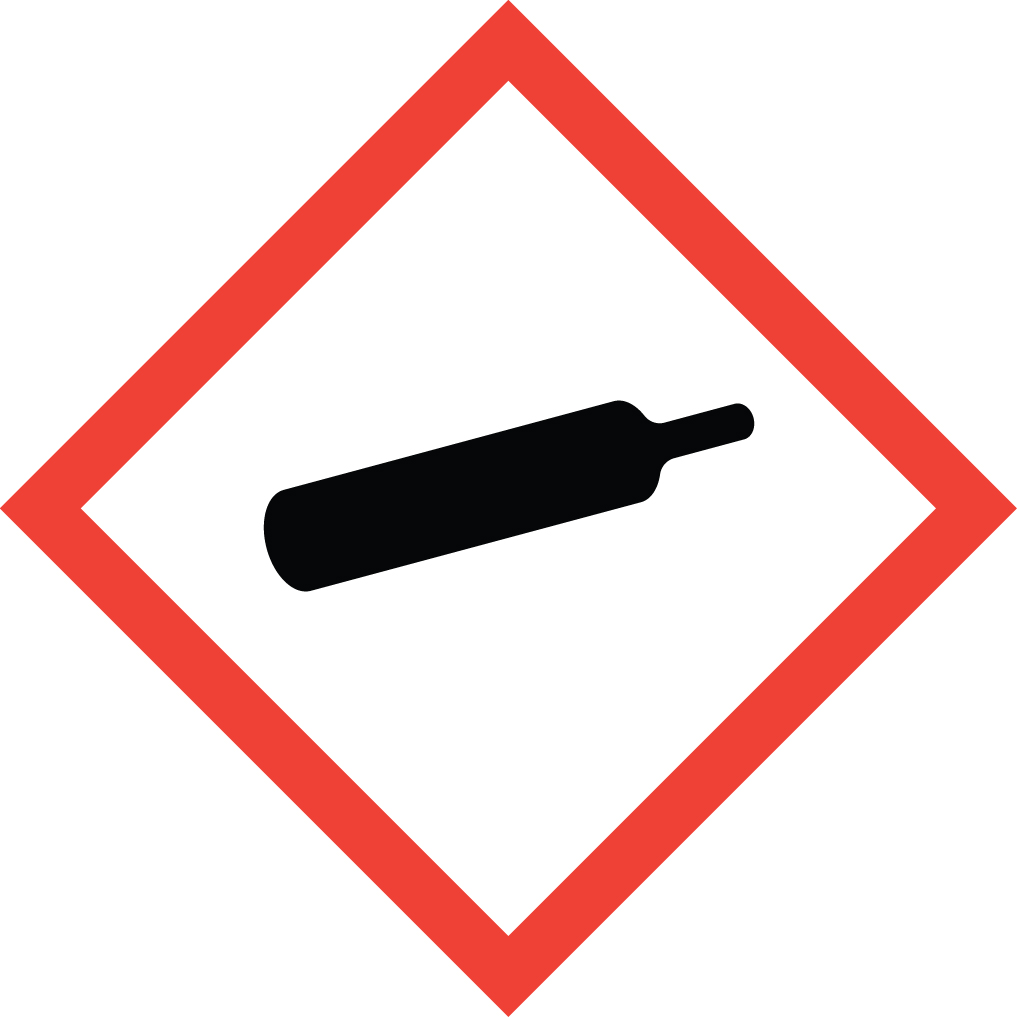
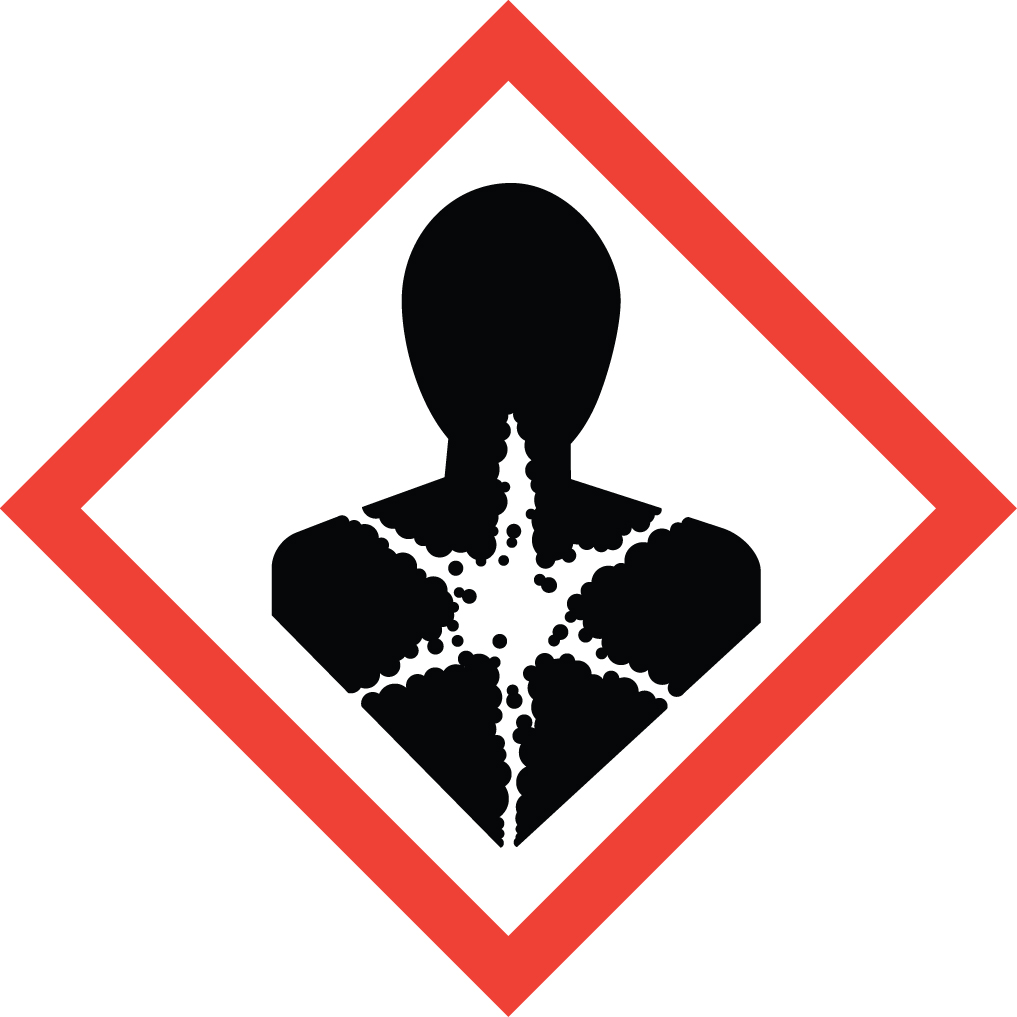
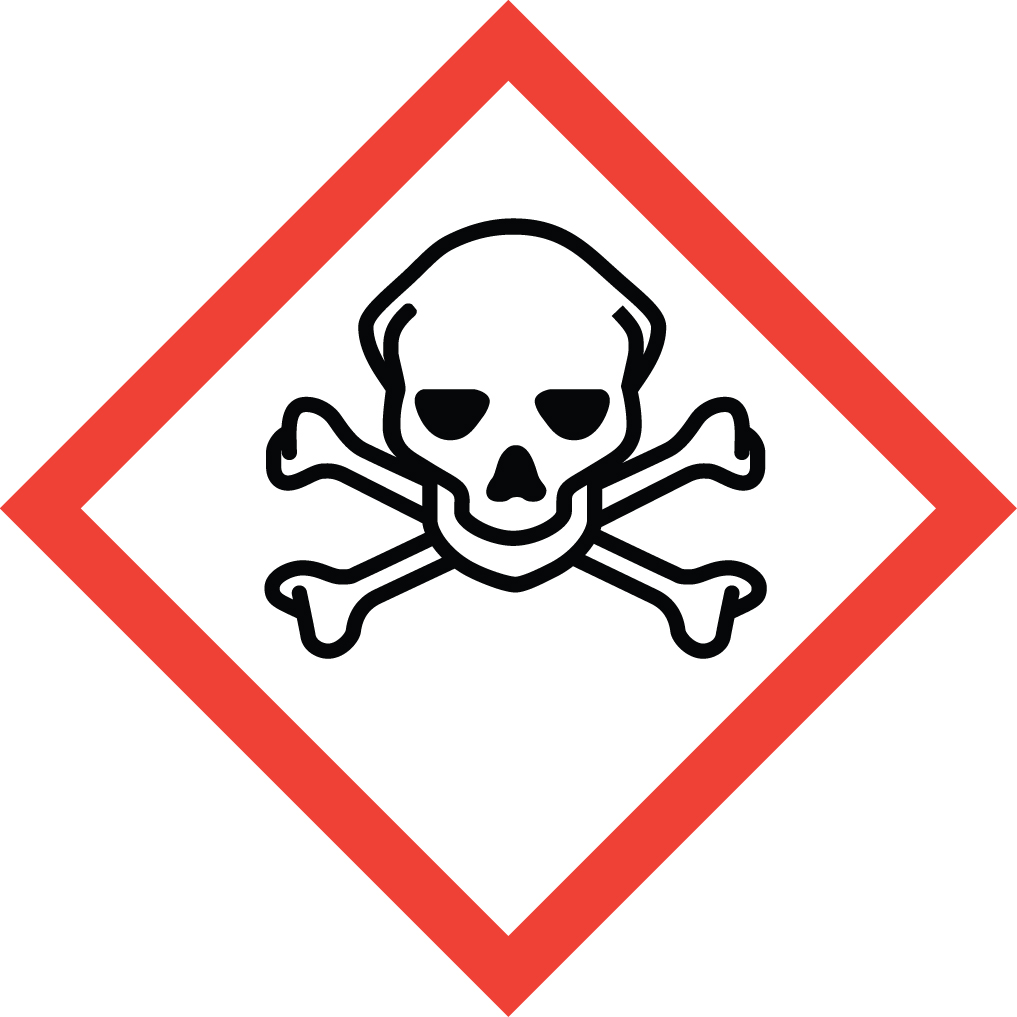
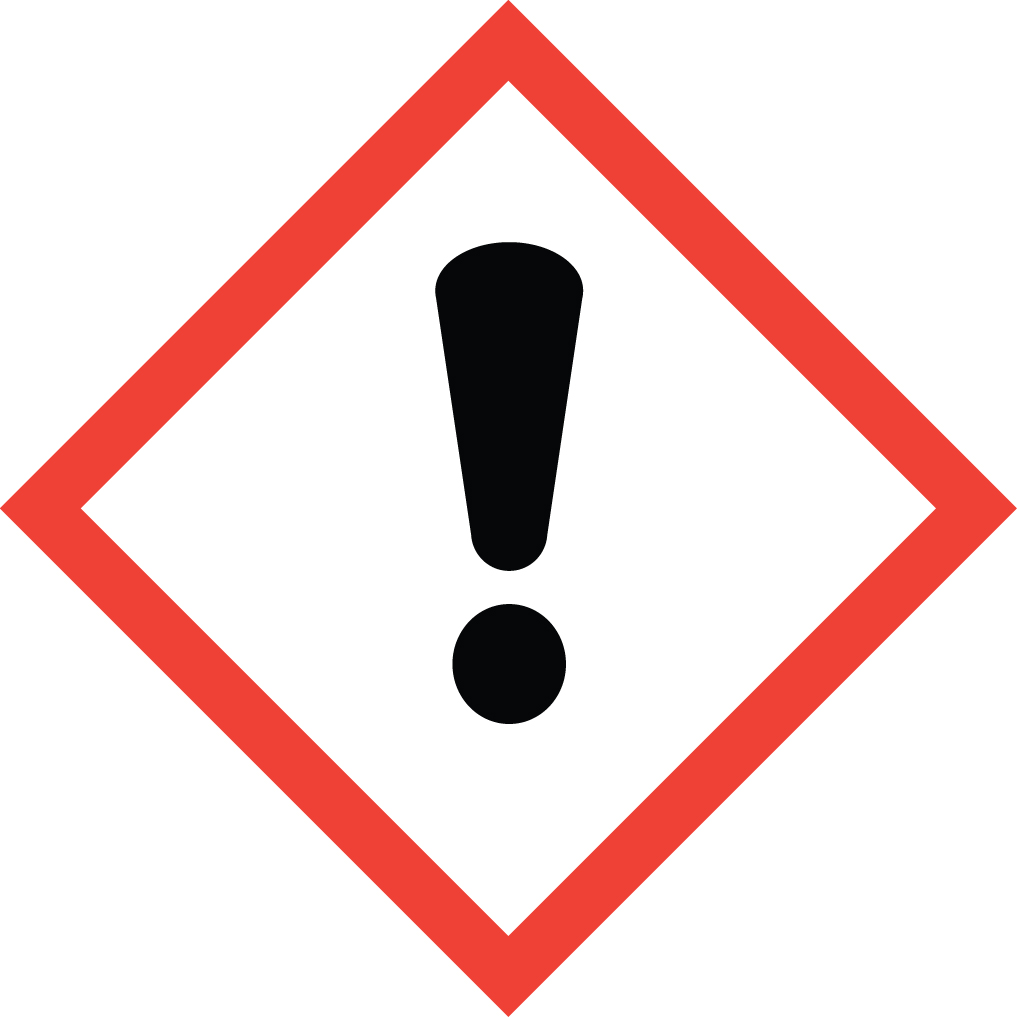 Compressed Gas Health Hazard
Acute Toxicity Irritant Toxic
Compressed Gas Health Hazard
Acute Toxicity Irritant Toxic
Mixtures, dilutions and chemically-reacted preparations generated in the work area such as stock solutions produced for laboratory procedures do not need to be listed in the inventory, but other aspects of the MSU Chemical HazCom program may need to be met. For example, the container must be labeled unless the preparation will be immediately used up. (See Part VII. Container Labeling, Storage, and Marking for information as to labeling the container.) Also, employees may need to be trained on the chemical’s hazards depending on whether possible reactions increased or created new hazards. With respect to determining the hazards if a mixture is prepared in house:
- If there is knowledge about the hazards of the mixture, identify those hazards, label containers appropriately and train employees accordingly;
- If there is no knowledge about the mixture as a whole, assume the hazards are consistent with the hazards of the constituent components; and
- A reaction has proceeded in the mixture which is likely to have changed the chemical’s nature, at which point the hazards of similar reacted mixtures can be used to presume hazards if no better information is available.
Note: SRM staff can assist in testing unknown chemicals/substances.
Chemicals/Chemical Byproducts Created via Work Processes.
Your work processes using non-toxic materials may cause potentially hazardous exposures. If you have situations such as the following examples, the processes should be evaluated as part of the hazard assessment. Training covering the hazards and the protective measures for such “non-traditional chemical” exposures must be done as part of your chemical hazard communication training program. Contact SRM (406-994-2711) if you have questions about making this determination.
Examples include:
- Melting glassware to re-shape it;
- Disturbing guano during a field trip to a cave;
- Using a “hot knife” to cut nylon rope or plastics;
- Handling animals in research causing release of allergens or potential zoonosis exposures;
- Disturbing university building walls or floors which may contain asbestos;
- Cutting or sanding lumber which could create potentially hazardous dust levels;
- Welding or torch cutting which may cause metal fume exposures; and
- Activating a fire suppression system that may have chemicals stored outside your work area but could discharge into your work area.
